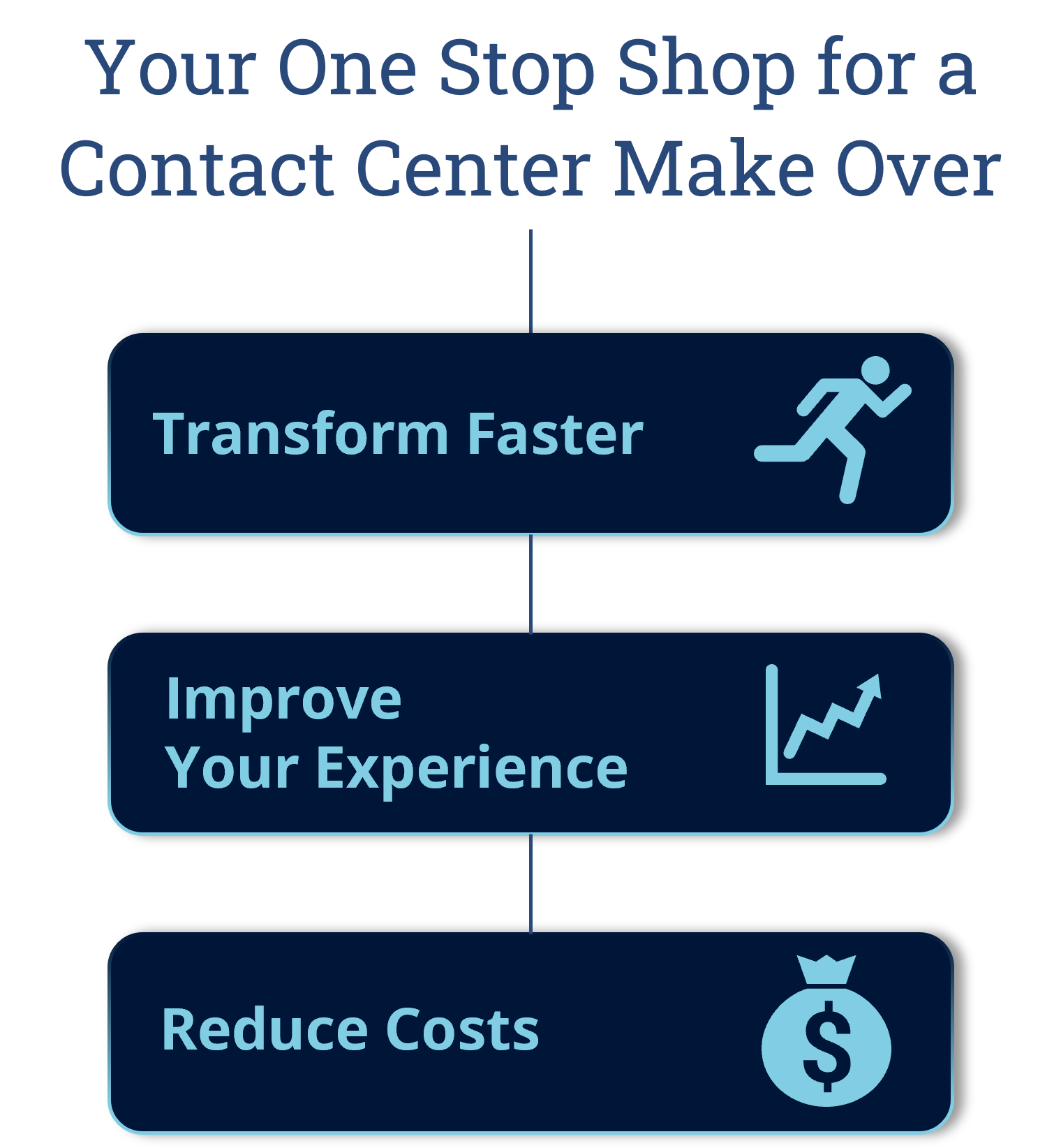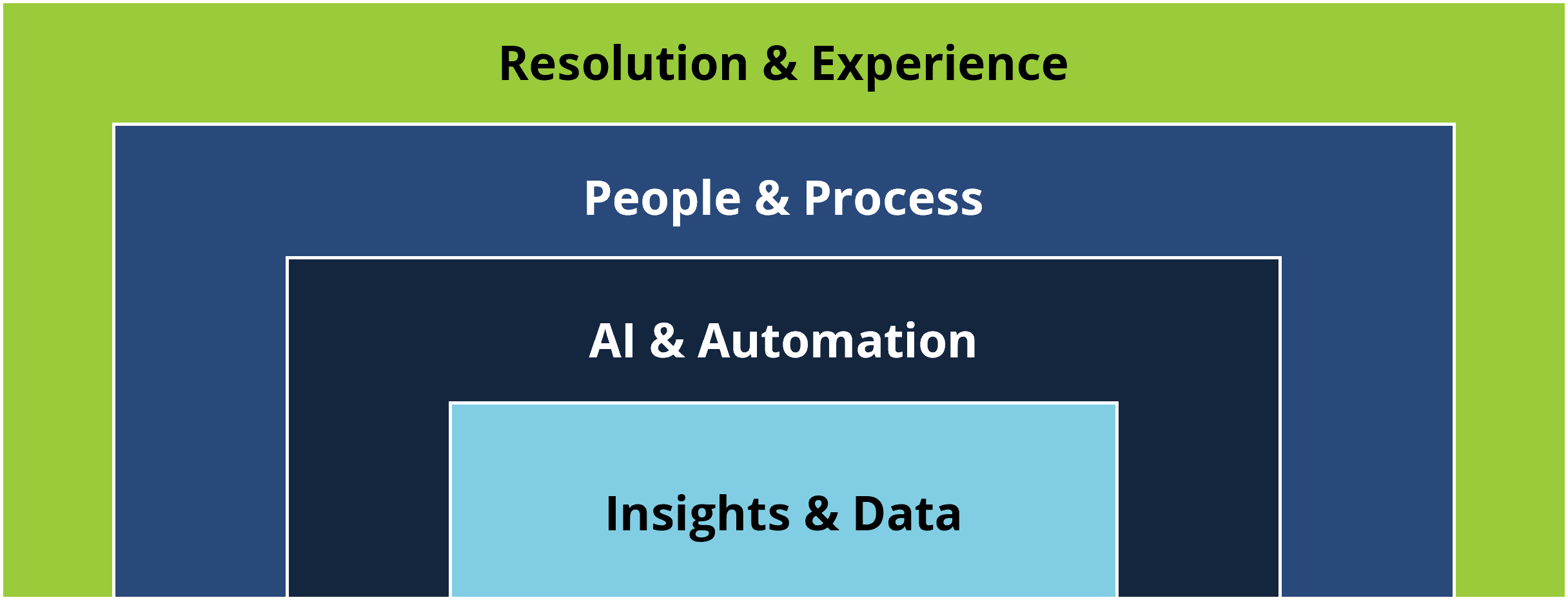AI Contact Center Transformation: How and Why Now?
The contact center industry today is almost unrecognizable from its early days nearly 40 years ago.



Today, contact centers need to deliver superior customer experiences while minimizing operational costs. To deliver this vital customer service engine, you must design a business result aligned strategy, choose the right technology partners, and leverage customer data and analytics for decision making. Making these improvements involves a long list of hard choices and challenges.
This is where ISG steps in. Beyond identifying gaps in your current state and helping you align on the future state business case, we specialize in advising on selecting the right tools and partners and executing a future-proof transformation plan. The result is an AI-enabled contact center that drives real business results: lower time-to-resolution, higher satisfaction and NPS ratings, and an overall elevated customer experience.
Leverage our unparalleled research to navigate the complex contact center technology landscape, assess your tech stack and identify new opportunities. From service provider comparison reports to the latest technology trends, our research will keep you on the cutting edge.
Read our Buyer's Guides to best understand, assess, optimize and select Contact Center software providers.
Learn MoreHow does your IT spend measure up against your industry peers?
Find out for freeUtilizing our extensive data on cost, price, rates and performance metrics of global sourcing contracts, we offer bespoke benchmarking solutions that give you the context you need to design your contact center specific to your industry and business needs.
Leave the complexities to us. We help you design a tailored scope and services strategy aligned with your desired end-state architecture, and we guide you through the sourcing transaction process, including vendor research, RFI/RFP support and program delivery.
Sourcing, contracting and navigating the technology provider ecosystem.
Learn MoreWe give you the data and tools to realize the full potential of your strategic vision.
Learn MoreOur focus on change management and training ensures smooth process transition and technology adoption. To ensure you get value from your investments, we help you define key performance indicators (KPIs) and governance so you can measure and manage results. Alternatively, we can manage your governance and/or analytics and provide actionable insights to enhance decisioning and performance.


Improve
Operations

Implement Modern Technology

Increase
Resolution

Drive New Value from Data

ISG is a leader in proprietary research, advisory consulting and executive event services focused on market trends and disruptive technologies.
Get the insight and guidance you need to accelerate growth and create more value.
Learn MoreThe idea of customer experience (CX) as a business practice relies heavily on being able to understand and track customer journeys. And that can be tricky because there isn’t a standard definition as to what a journey consists of. For example, inside a contact center the journey is perceived in terms of the steps a customer takes to achieve a particular result. Sometimes that is broadened out to include aspects of the customer’s history, especially when the business wants to use historical data to craft an offer or change a tactic.
I am struck by the blizzard of software announcements this year describing new features for CX tools that are “agentic,” meaning autonomous tools take actions without (much) human intervention. Industry conversation about agentic AI has proceeded ahead of clarifying definitions and a sense of how it fits on a continuum of rapid AI development.
There are contact centers, and there is customer experience. They are not the same thing, even though we have a tendency to conflate them or at least discuss them in tandem for operational and planning purposes. This is mostly fine, but it does obscure one basic difference that will matter more as enterprises succeed at integrating contact centers into enterprise CX strategies. That difference is in metrics and, by extension, how we define success.
Software providers have identified “openness” as a key consideration for contact center buyers. Since there is no generally accepted rule about what makes a system open, it makes sense for us to examine what components contribute to that quality, and why it should be thought of as a good thing.
The breadth of customer experience (CX) solutions created by software providers in recent years has expanded into new areas, usually related or adjacent to existing, more traditional toolkits. Most providers in the space began as more-or-less pure play contact center software providers, so the CX toolset starts with that set of technologies. Products are grounded in core functions for service delivery, like interaction handling, labor management and customer tracking. Some software providers have come into the CX space from other starting points, notably customer relationship management (CRM) and marketing technologies, so they start with a different core toolset, often expanding to add contact center functions.
Within the rapidly developing and changing realm of customer service, advanced enterprise contact centers delivering superlative CX play a crucial role in ensuring customer satisfaction and improving business outcomes. These centers serve as the central hub for customer interactions, utilizing a mix of technology and human interaction to efficiently address customer needs. The incorporation of advanced technologies such as AI, generative AI (GenAI), ML and cloud-based solutions has transformed the operations of contact centers, making them highly agile, adaptable and capable of providing appropriate and personalized CX.
Overall BPO growth, which includes customer experience and other back-office operations, remained flat at $5.6 billion in the first half of 2024 compared to 1H2023. Interestingly, the number of awards – 457 – was higher in 1H2024 than the 403 in 2023. This is a strong indicator that the demand in the market is intact. However, deal sizes have been reduced.

